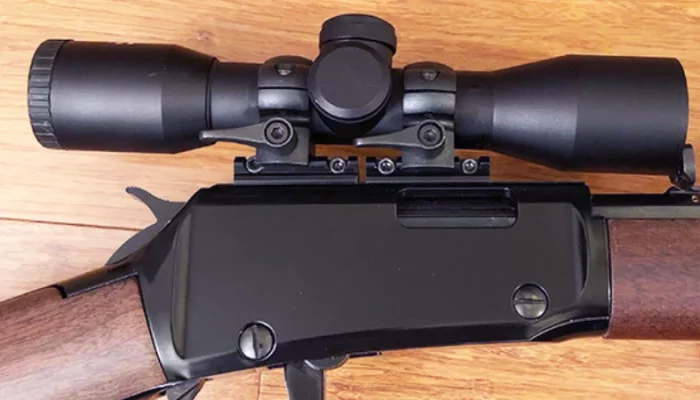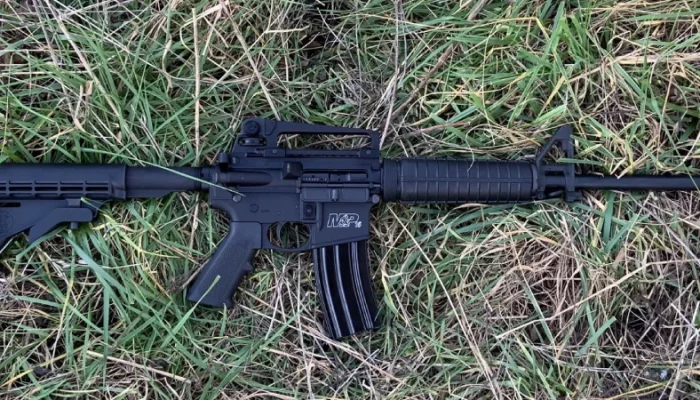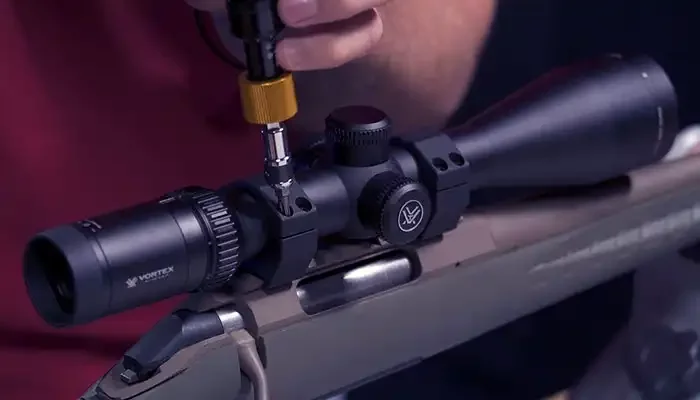In our previous episode, we learned what MOA is and how to use an MOA scope. It’s time for the next episode to air and help you guys learn yet another term. I promise I will try to keep it simple like last time.
Without further ado, let’s learn a bit more about MRAD.
What Is MRAD?
MRAD = milliradian. This is the unit of measure that tells you how far you have gone around a circle. A milliradian is 1/1000th of a radian.
In a full circle, there are about 6280 milliradians. In other words, 6.28 radians.
What Is MRAD Reticle?
MRAD reticle features a crosshair formed by a vertical and horizontal line intersecting one another. Each intersection is either Mil-dots or subtension lines along both vertical and horizontal planes. The measurement from the center of one mil-dot to the center of another mil-dot is 1 milliradian.
What Focal Plane Is Your Scope In?
To properly learn MRAD, you will need to find out what focal plane your MRAD reticle is in. Your scope manufacturer should mention it. If your reticle is in the first focal plane, then the MRAD measurement remains to be true at each magnification level.
But if it’s in the second focal plane, then you will need to use the highest level of magnification to retain accuracy.
How To Find Range With Mrad?
To find a specific range using your MRAD reticle, you can use a basic formula. In the USA most shooters use yards as the unit of measurement. To find the accurate yards between you and the target, you will need to know the height of the target in inches.
Let’s do math. Imagine the target you are shooting is 36” tall. Multiply 36 by 27.778 then device the mil size of the object you saw through the reticle. The result is the number of yards between you and the target.
Target size inches x 27.778 /mil size = yards to target. And if you are using a laser finder anyway, then you don’t need to do any math.
Mil In Inches At Various Yards
Here is a small chart showing you the number of inches for 1 mil at various yards. Don’t forget, 1 mil is the distance from the center of one mil dot to the next one.
| Range in yards | MIL (1 MIL in inches) |
|---|---|
| 100 | 3.6 |
| 150 | 5.4 |
| 200 | 7.2 |
| 250 | 9.0 |
| 300 | 10.8 |
| 350 | 12.6 |
| 400 | 14.4 |
| 450 | 16.2 |
| 500 | 18.0 |
| 550 | 19.8 |
| 600 | 21.6 |
| 650 | 23.4 |
| 700 | 25.2 |
| 750 | 27.0 |
| 800 | 28.8 |
| 850 | 30.6 |
| 900 | 32.4 |
| 950 | 34.2 |
| 1000 | 36.0 |
Adjusting The Turrets
On 0.1 mil or 1/10th scopes, you can fine-tune using 10 clicks for 1 mil. If you are following a guide for each shoot and your guide said to drop 2 mil, then you will need to turn the turret 20 clicks downwards. If we are guesstimating distance, then at 100 yards it’s around 7.2 inches.
Conclusion
MRAD is not that hard to use once you know how to blend in the equation in your daily shooting and learn the adjustment clicks on the fly. There are many arguments present online saying MOA is better or MRAD is better, pay no heed to them.
You will need to make the decision of MOA or MRAD based on your scope and gun. So, stick to what you know and what you find easy to learn.
That’s all for now. Thanks for reading as always. Hope to see you on the next one. Take care and bye.
Hi, I’m Brent Hansford. A writer turned hunter & now sharing my love for the sport through writing. As I practically breathe weapons, I firmly believe I’m capable of providing you with new knowledge about firearms and hunting. My mission is to help more people get better at hunting & master the weapons. Let me help with unleashing the beast within you!



